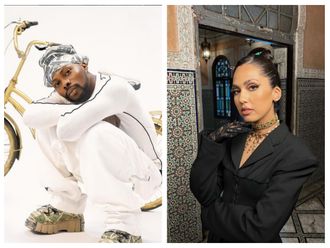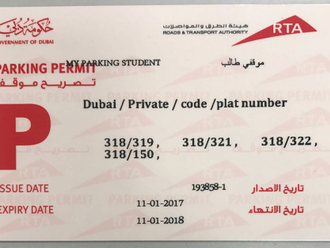
Every few years, the world comes together to showcase its cultural diversity in a celebration of technological novelties, while strengthening partnerships between countries and organisations. Take a look at the highlights of World Expos sanctioned by the International Exhibitions Bureau.
1851, London
The site of what is also called the “first world’s fair” is an innovation in itself. Joseph Paxton’s building for the Great Exhibition, the Crystal Palace, was only possible because of the invention of the cast plate glass method, which allowed for large sheets of cheap but strong glass to be made.
1855, Paris
The Palais de l’Industrie was constructed to rival the Crystal Palace. Its sole surviving remnant is the Théâtre du Rond-Point in Paris. Commissioned by Emperor Napoleon III, the fair saw the introduction of the Bordeaux classifications, which have long been the most prestigious pecking order of grape beverages.
1862, London
This event celebrated the large-scale commercial development of the sewing machine, with more than 50 types from around the world on display. The US was at the forefront of the trend, but the British were out in full force, including models from the likes of Henry Ferrabee and W.F. Thomas and Co.
1867, Paris
A spirit of peace reigned over the fair, following a time of war. Victor Hugo welcomed foreign visitors with the emotional declaration: “Allemands! Ihr seid alle Menschen!” [All men! You are all humans!] Nevertheless, the best-known exhibit soon became Germany’s ‘Cannon King’, Alfred Krupp’s 47-tonne cannon.
1873, Vienna
Between the stock exchange crash, the Danube floods and a cholera epidemic, Vienna didn’t have it easy. But one of the legacies of the fair was the promotion of Japonism. This was the first time the Asian country had participated officially, showing industrial art products such as a lantern about four metres in diameter.
1876, Philadelphia
Also called the Centennial International Exhibition to celebrate the 100th anniversary of the signing of the Declaration of Independence in Philadelphia, this fair was the first held in the US and saw exhibits such as Alexander Graham Bell’s telephone, the Remington typewriter and Heinz Ketchup.
1878, Paris
The concept of intellectual and commercial property stepped to the fore with the first literary congress. The fair also saw the first international copyright agreement for literature and featured Yablochkov’s “electric candles”, which illuminated Avenue de l’Opéra.
1888, Barcelona
The previous fair, in Melbourne in 1880, was the first held in the southern hemisphere and focused on establishing it as a cosmopolitan city equal to any in Europe. Barcelona’s fair’s legacy lies in its architectural marvels — usually considered the preamble of the vigour of modernism — such as the red brick Arc de Triomf.
1889, Paris
Built as a symbol for the event, the wrought iron Eiffel Tower represented so much more: it was, and still is, a symbol of the architectural and technological achievements of the 19th century, while at the same time serving as a reflection of modernism. It remained the highest building in the world until the 1930s.
1893, Chicago
Ostensibly meant to celebrate the 400th anniversary of Christopher Columbus’ first voyage to the New World, it saw a number of firsts, including prototypes for the dishwasher and fluorescent light bulbs. The fair introduced national pavilions and had the world’s first Ferris wheel, which could fit 2,160 people.
1897, Brussels
Africa was highlighted as Belgium’s King Leopold II used the Expo to promote the Congo, including its export products such as coffee, cacao and tobacco. At the next fair, in Paris in 1900, the world was introduced to the word “television” through a mention in the report of Russian engineer K. Perskii.
1904, Saint Louis
Hello, wireless technology! The fair showcased ethnographic displays of civilisations deemed to be less developed, while introducing edible ice-cream cones, wireless telegraphy, air conditioning, neonatal incubators and ice skating in summer in a city of nearly 1,500 buildings — a model urban community of the future.
1906, Milan
The fair focused on transportation, following the opening of the Simplon Tunnel, which goes through the Alps, and was a great leap forward for the industry. The previous year, a fair was held in Liège and the Palais de Beaux Arts building, currently the Musee d’Art Moderne et d’Art Contemporaine, was left to the city.
1910, Brussels
The Art Nouveau-style Palace Hotel — these days the Crowne Plaza Brussels — Le Palace — opened in the lead-up to the event following a competition to construct a deluxe property. Featuring en suite rooms, it was Belgium’s first concrete building and was built in a record time of 11 months.
1915, San Francisco
At the 1913 Expo in Ghent, the German Reich was represented principally with mechanical engineering and household and office technology products. Meanwhile, this event saw the Palace of Machinery, the largest structure in the world at the time. It was the first building to have a plane fly through it.
1929, Barcelona
Financially not too successful due to the crash of the stock market during the event, the fair did have a huge impact on design, notably through the Barcelona Pavilion created by German architect Ludwig Mies van der Rohe and his icon of modernism, the Barcelona chair, considered contemporary even today.
1933, Chicago
amed a Century of Progress, the theme was technological innovation. A highlight was the Homes of Tomorrow Exposition that demonstrated modern home convenience and new building materials and techniques. Its symbol was the Sky Ride, a transporter bridge that ferried people across the lagoon in the centre of the fair.
1935, Brussels
Amid the threat of war, the fair focused on fostering competition in technology, arts and economic development. It was the first fair to have TV. The following fair, in Paris in 1937, was dedicated to art and technology in modern life. The Polish express passenger locomotive Pm36-1 won a gold medal.
1939, New York
The first Expo to be based on the future, the fair featured Futurama, a car-based city by General Motors that tried to show the world 20 years into the future. A keyboard-operated speech synthesiser was demonstrated, as well as colour photography, nylon, air conditioning, fluorescent lamps, the View-Master and Smell-O-Vision.
1949, Port-Au-Prince
Celebrating the 200th anniversary of the city’s formation, the Expo was meant to demonstrate Haitian culture to other countries and encourage tourism. President Dumarsais Estimé committed $1 million to the project and a pavilion from Guatemala was among the displays, while the Vatican sent a chapel.
1958, Brussels
The first major fair after the Second World War, more than 41 million visitors visited the site best-known for the molecule building, the Atomium. One of the most popular exhibitions was the Philips Pavilion, playing through 425 loudspeakers Edgard Varèse’s Electronic Poem of noises not usually considered musical.
1962, Seattle
Called Century 21, the fair saw the creation of the Space Needle and Alweg monorail. It imagined the future, featuring wall-size televisions, outer-space communications, automatic windows, disposable dishes, Gyrocopters, a clock that runs on gas, machines to transmit correspondence and others.
1967, Montreal
Themed Man and His World, Canada’s first world fair is said to be the most successful Expo of the 20th century, with the most attendees to that date. Introduced as a concept car at the fair, the Alfa Romeo Montreal went into production as the Tipo 10564, which was shown at the 1970 Geneva Motor Show.
1970, Osaka
One of the most popular venues was the world’s first spherical concert hall in the West German Pavilion, with the theme Gardens of Music. Speakers surrounded the audience, creating a 3D sound experience. The world also saw early mobile phones, local area networking and maglev train technology.
1992, Seville
From moving cinemas to 360° view presentations, the nations presented a feast of sound and colour. Turkey won the award for best use of multimedia for an interactive software presentation of its tourism sector, while Japan created the world’s largest wooden structure for the fair.
2010, Shanghai
Themed Better City — Better Life, China’s first World Expo was also the world’s largest at 5.28 square kilometres. It achieved a record 73 million visitors while many more could explore the fair online. The Expo Axis, the main building, features the world’s largest membrane construction.
2015, Milan
The theme, Feeding the Planet, Energy for Life, sets the tone for what to expect at the next fair: technology, innovation, culture, traditions and creativity linked to food safety, security and quality. Vietnam’s pavilion will be a mixed-use sustainably functioning space, incorporating rice paddies into the building.
2020
Stop all rail construction — the Hyperloop is here! Wouldn’t it be cool if we could transport millions of visitors to the chosen host city from around the world in a futuristic tube that travels at about 1,130 kilometres per hour? Likely still decades away, this would be the most innovative overhaul of the travel industry.










